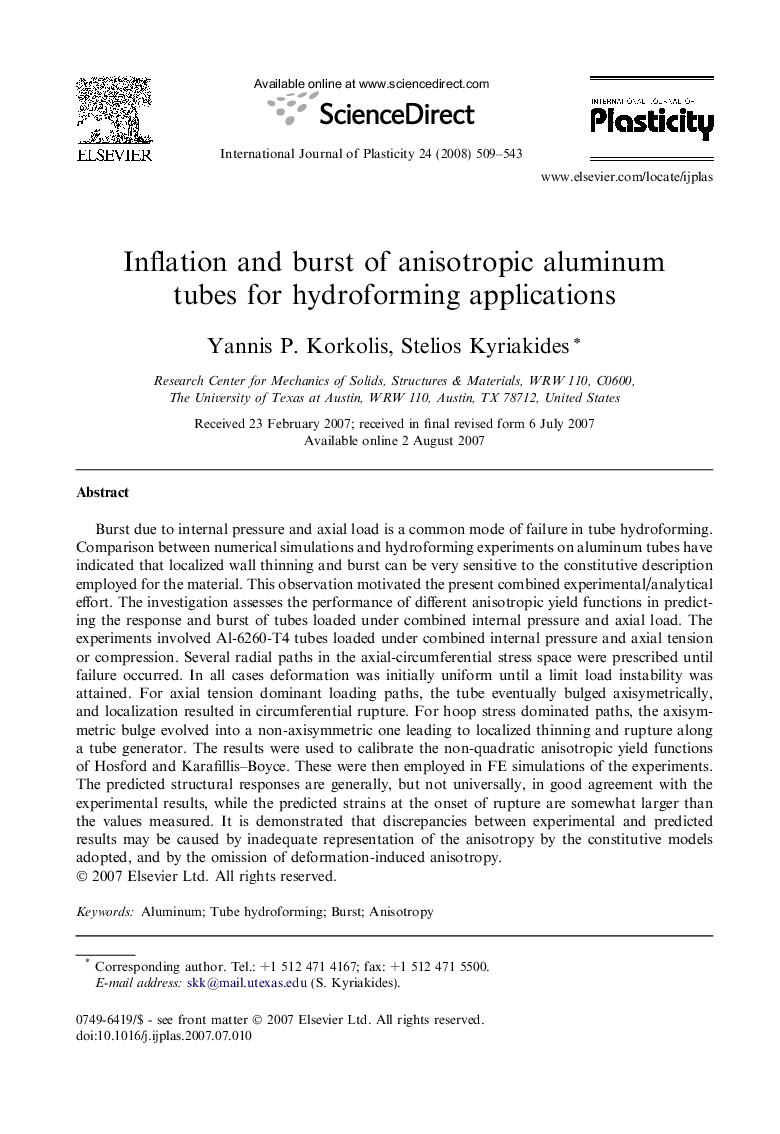| Article ID | Journal | Published Year | Pages | File Type |
|---|---|---|---|---|
| 787664 | International Journal of Plasticity | 2008 | 35 Pages |
Burst due to internal pressure and axial load is a common mode of failure in tube hydroforming. Comparison between numerical simulations and hydroforming experiments on aluminum tubes have indicated that localized wall thinning and burst can be very sensitive to the constitutive description employed for the material. This observation motivated the present combined experimental/analytical effort. The investigation assesses the performance of different anisotropic yield functions in predicting the response and burst of tubes loaded under combined internal pressure and axial load. The experiments involved Al-6260-T4 tubes loaded under combined internal pressure and axial tension or compression. Several radial paths in the axial-circumferential stress space were prescribed until failure occurred. In all cases deformation was initially uniform until a limit load instability was attained. For axial tension dominant loading paths, the tube eventually bulged axisymetrically, and localization resulted in circumferential rupture. For hoop stress dominated paths, the axisymmetric bulge evolved into a non-axisymmetric one leading to localized thinning and rupture along a tube generator. The results were used to calibrate the non-quadratic anisotropic yield functions of Hosford and Karafillis–Boyce. These were then employed in FE simulations of the experiments. The predicted structural responses are generally, but not universally, in good agreement with the experimental results, while the predicted strains at the onset of rupture are somewhat larger than the values measured. It is demonstrated that discrepancies between experimental and predicted results may be caused by inadequate representation of the anisotropy by the constitutive models adopted, and by the omission of deformation-induced anisotropy.
